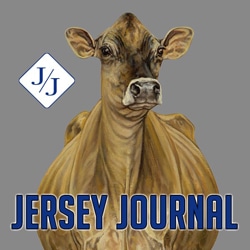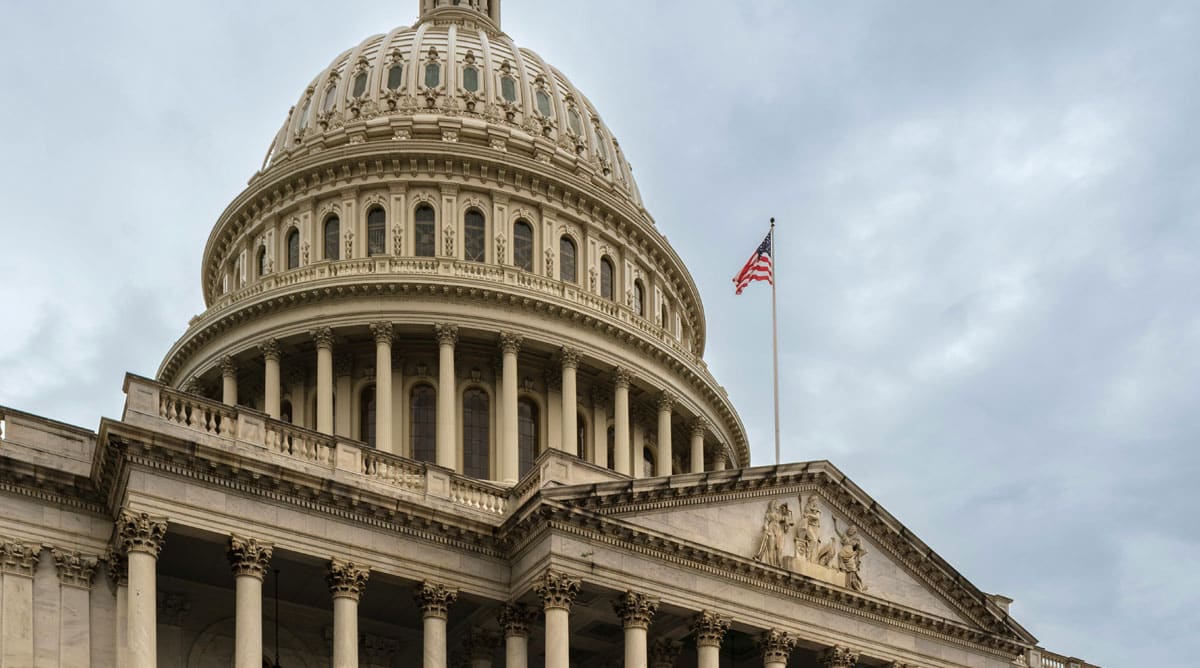Jersey Breeders Updated on Dairy Policy
Jersey breeders were brought up to date on federal dairy policies and issues of impact at the annual meeting of National All-Jersey Inc. (NAJ) in Springfield, Mass., on June 21, 2024. Charlie Garrison of the Garrison Group spoke about the new farm bill, the school milk program, tax policy updates and international trade. Erick Metzger, general manager for NAJ, discussed dairy profitability, expansion of the monthly milk production report published by the U.S. Department of Agriculture (USDA) and inclusions in USDA’s recommended decision for Federal Milk Marketing Orders (FMMOs).
To read this article as a downloadable PDF, click here.
Farm Bill
The Agriculture Improvement Act of 2018, aka the farm bill, is set to expire September 30, 2024. Though Congress enacted an extension last November, the deadline for a new farm bill is all but sure to come and go thanks to stalemates in both the House of Representatives and the Senate.
While the House Agriculture Committee passed its version of the farm bill in late May with bipartisan support, there is no clear path to a vote on the House floor, Garrison noted.
“There are some Republicans who don’t think we should be doing farm bills at all,” said Garrison. “And there are enough Democrats concerned about what the House majority wants to do with nutrition programs that we don’t have enough votes to get it passed on the House floor.”
“The scenario is pretty much the same in the Senate Committee on Agriculture, Nutrition and Forestry,” Garrison remarked. Chairwoman Debbie Stabenow (D-Michigan) and ranking member John Boozman (R-Arkansas) have both released summaries, but nothing has moved forward and firm differences between the majority and minority remain, especially on nutrition assistance.
The House and Senate stand in agreement on the Dairy Margin Coverage (DMC) program. Both want to increase the annual milk volume limit for Tier 1. Currently, the House bill stands at 6 million pounds. Both committees also want to allow producers to update their production histories and to keep the premium discount for making a five-year commitment to DMC.
The House majority and Senate minority also support increased funding for the Environmental Quality Incentives Program (EQIP), which has been a problematic program for livestock agriculture in the past. The very popular EQIP is always oversubscribed so a lot of worthy projects go unfunded, Garrison noted.
Both want to devote the remaining funds from the Inflation Reduction Act to EQIP and climate programs of the Conservation Stewardship Program. Senate Democrats and the White House are not in agreement, however, as they want those funds to remain devoted only to ag climate mitigation. Republicans argue that moving those funds to conservation programs now will increase the baseline going forward and be helpful in perpetuity for farm bills.
On trade incentives, there is bipartisan agreement to increase the Market Access Program and funding of Foreign Market Development. Both are significant for funding the U.S. Dairy Export Council and would direct USDA and the Office of the U.S. Trade Representative to defend the use of “common food names” like Gouda and Parmesan in international commerce.
“The sticking point on the farm bill right now is the nutrition program,” remarked Garrison. “There is no consensus yet on the supplemental food program that used to be called food stamps.”
In the current farm bill, the nutrition title is about 75% of the baseline. This is projected to be 82% of the new farm bill. To limit its cost, Republicans favor increased requirements to qualify for the Supplemental Nutrition Assistance Program (SNAP), among others, a move not supported by Democrats.
Differences aside, there is bipartisan agreement in the Senate to expand the Dairy Nutrition Incentive Program to include all milk varieties along with cheese and yogurt. Currently, SNAP purchases are limited to nonfat and 1% dairy products. This is not in the current version of the farm bill passed by the House Agriculture Committee.
Garrison also noted that there is no consensus yet on rolling back California Proposition 12, restricting foreign ownership of farmland, expedition of the Food and Drug Administration approval process for feed additives, school milk options and funding of the Dairy Business Innovation Initiatives.
School Milk Options
The Whole Milk for Healthy Kids Act, which aims to reverse legislation that limits schools to serving only nonfat or 1% milk, was approved by the House in December 2023 with big bipartisan support (330-99). A week later, it was advanced to the Senate floor by Roger Marshall (R-Kansas), who requested “unanimous consent,” a move that sets aside procedure to expedite an action of which there is no dispute. However, it was blocked by Chairwoman Stabenow, who wants the change to be conveyed through the committee.
There is also concern that the Whole Milk for Healthy Kids Act does not align with the current Dietary Guidelines for Americans published by the USDA and the U.S. Department of Health and Human Services.
“The guidelines are to be revised in 2025, but proponents don’t want to wait that long for a change, so I think this will be added to the farm bill,” said Garrison.
Tax Policy and Trade
Garrison also discussed the Tax Cuts and Jobs Act, which is set to expire in 2025. Passed in 2017 as a measure to reduce taxes, Garrison advised farmers to be on the lookout for changes in bonus depreciation, the treatment of pass-through income and tax rates for businesses. Also important for farm families will be changes in estate tax exemptions and tax rates on capital gains.
A bipartisan Congressional Agricultural Trade Caucus was established in January 2024 with a goal to boost international competitiveness, increase market access, address non-tariff barriers to trade, improve supply chains and re-establish the U.S. as a global leader in agriculture trade. Current members include U.S. representatives Jim Costa (D-California), Dusty Johnson (R-South Dakota), Adrian Smith (R–Nebraska) and Jimmy Panetta (D-California).
Garrison urged Jersey breeders to contact their House representatives and ask them to join the caucus. Contact NAJ if you would like help connecting with your representative.
Dairy Income Outlook
The outlook for dairy profitability in 2024 looks a lot better than it did last year, thanks to improving milk prices and strong prices for cull cows, replacements and beef-dairy cross calves, Metzger reported.
Improving milk prices are reflected in indemnities received by dairy producers through the DMC program, which is based on the all-milk price minus feed costs.
“So far this year, decent indemnities were paid for January (income at the $9.50 income over feed cost per hundredweight level) and a smidge was paid for February,” said Metzger. “None were paid for March and April, and none are projected moving forward. The ag prices report projects income over feed cost at $11 per hundredweight for May, $12.50 for June and July, and close to $13.50 for the last four months of the year.”
What happened? Feed costs have come down. But more significantly, milk prices have come up, and cheese exports have played a major role in this.
The Global Dairy Trade (GDT), the leading international market for dairy commodities, holds events, aka auctions, the first and third Tuesdays of each month. In February, Cheddar cheese was trading on the GDT at $1.87 per pound while the commodity lagged more than 30 cents on the Chicago Mercantile Exchange (CME) at $1.52 per pound. In March, the gap was even greater, trading at $1.94 and $1.49, respectively. By April, the margin had closed to 20 cents, with GDT prices at $1.80 per pound and CME at $1.61.
“The impact of this is that exports went way up,” remarked Metzger. “In March, 110 million pounds of cheese were exported as a single-month record. In April, 100 million pounds were exported as the second highest month. More export means less is available for the CME.”
“So, cheese buyers found themselves short,” Metzger continued. “Block cheese is now over $1.85 on the CME, which translated into an increase of $3 in the May Class III price versus April.”
Dairy profitability is also being boosted by beef prices. “Cull cow prices are astronomical, and, if you are lucky enough to have replacements for sale, they are bringing really good prices too,” Metzger said. “And we have been getting reports of people getting $350 for day-old beef-dairy calves.
Milk Production Report
NAJ is leading the effort to expand the milk price reports published by USDA to include meaningful measures of components.
Currently, USDA’s National Agricultural Statistics Service (NASS) produces a monthly report with pounds of milk, number of milking cows and production per cow for the U.S. and each of the 24 major dairy states. NASS also publishes a monthly report on agriculture prices that includes the all-milk price and butterfat tests for the U.S. and the 24 major dairy states.
Historically, the two have been used to estimate component production and pricing. “If you knew pounds of milk, you knew pounds of fat and protein because the two have been correlated for a long time. But that is changing, and quickly,” noted Metzger. “Milk production has declined each of the past 10 months while butterfat production has increased.”
“The milk production report is now no longer indicative of component production.”
Though NASS reports on fat in its ag prices report, it does not report on protein in either of its monthly reports. Component tests are reported by the FMMOs, but this represents only 65-70% of the domestic milk supply.
The industry is in agreement—we need USDA to be reporting on components in a timely manner, Metzger remarked. I think USDA recognizes there is an issue but wants to hear from others in the industry too.
FMMO Hearing
Metzger also mentioned that USDA’s recommended decision due in July will include updates in five general areas of FMMO price formulas: milk composition; surveyed commodity products; make allowances and product yields; Class I base price; and Class I differentials.




